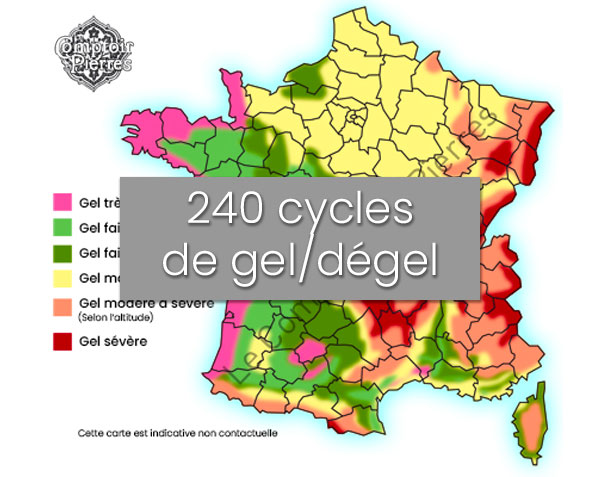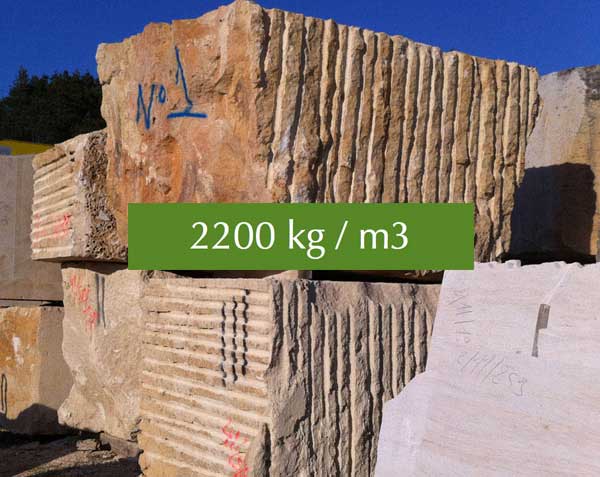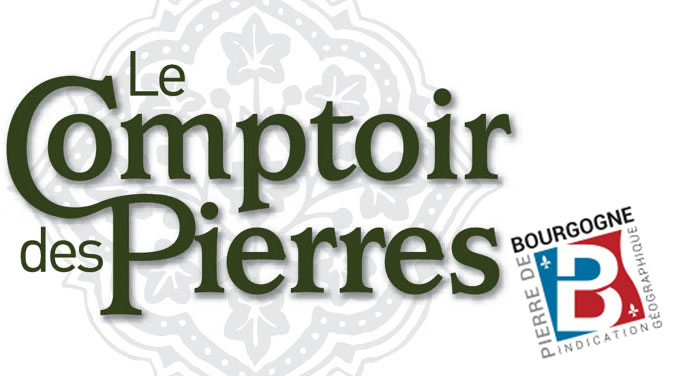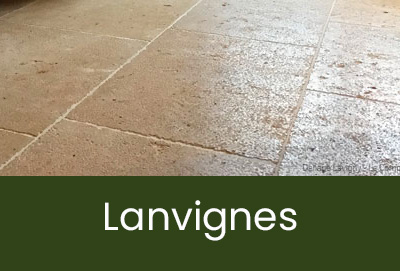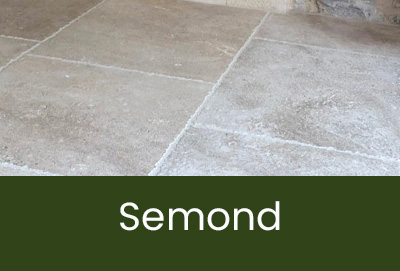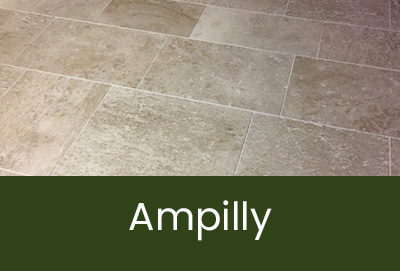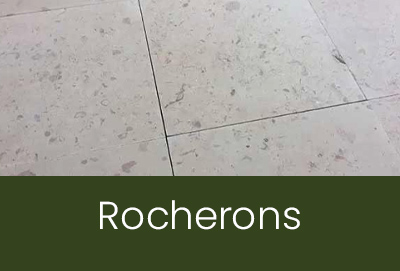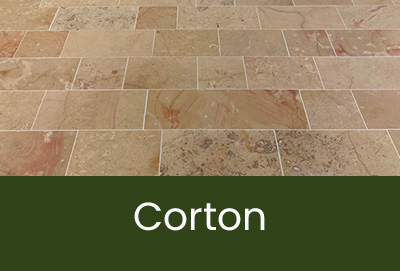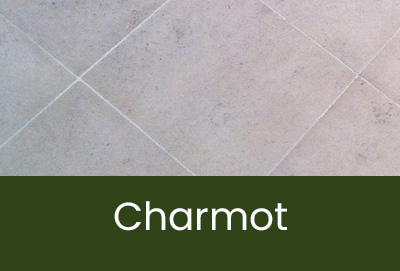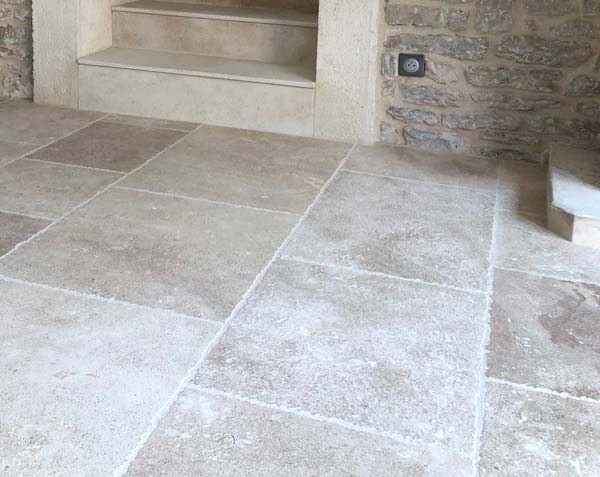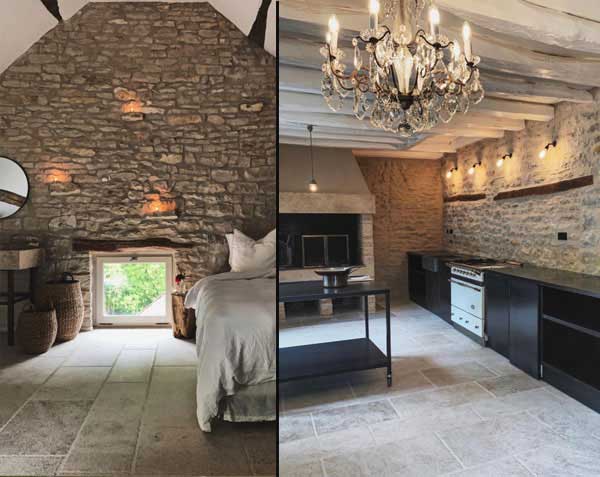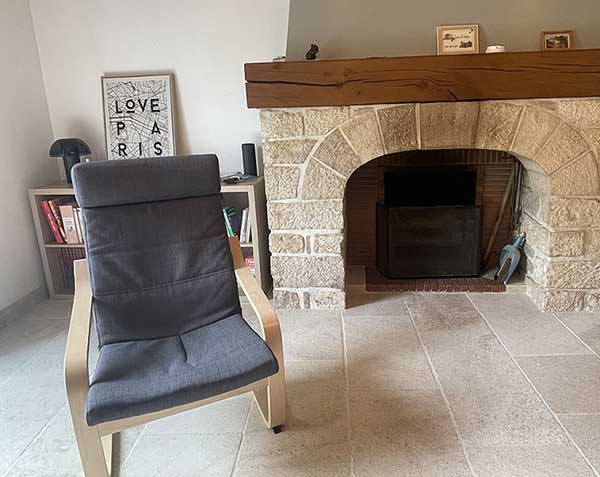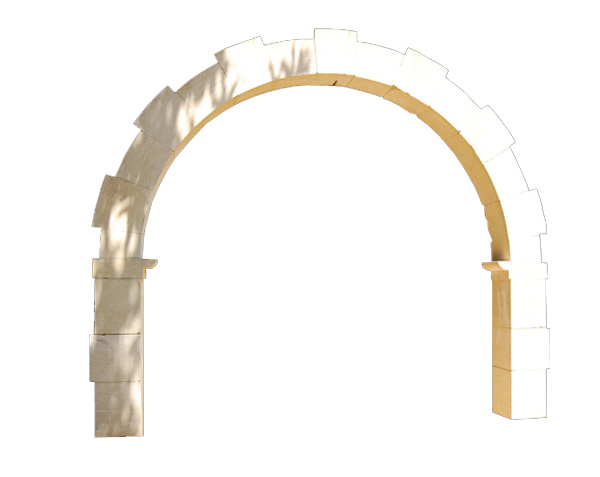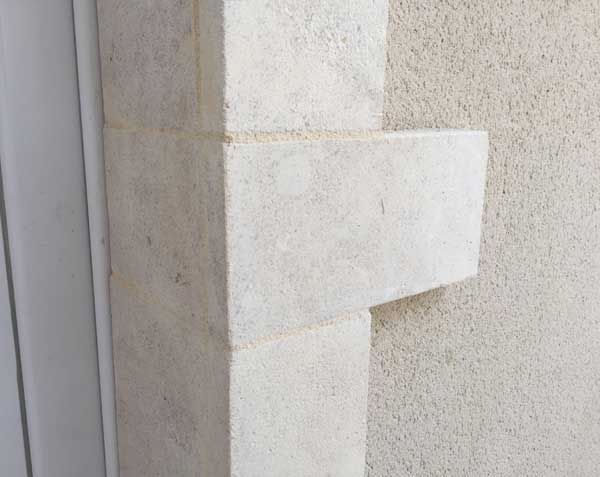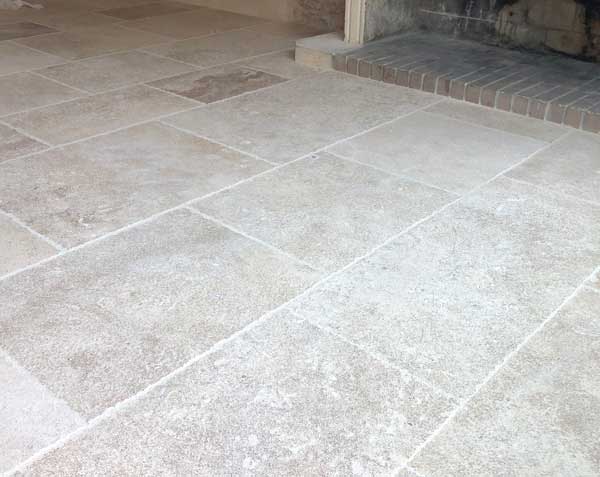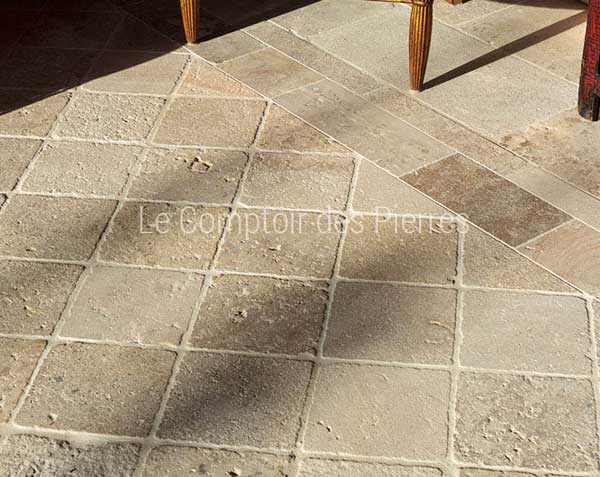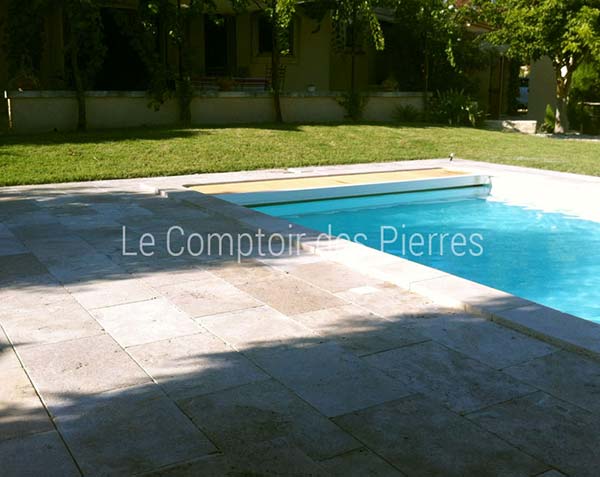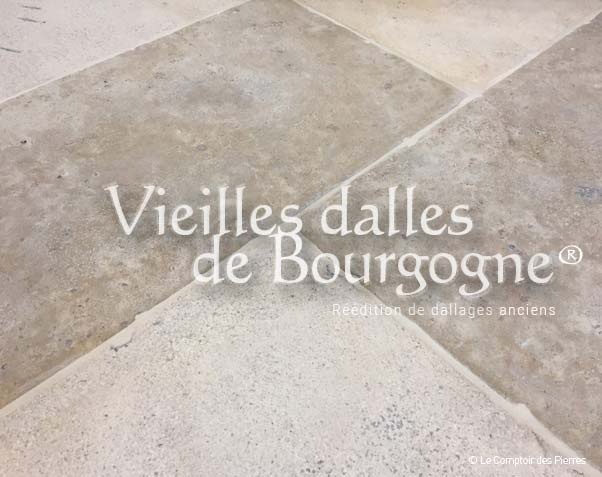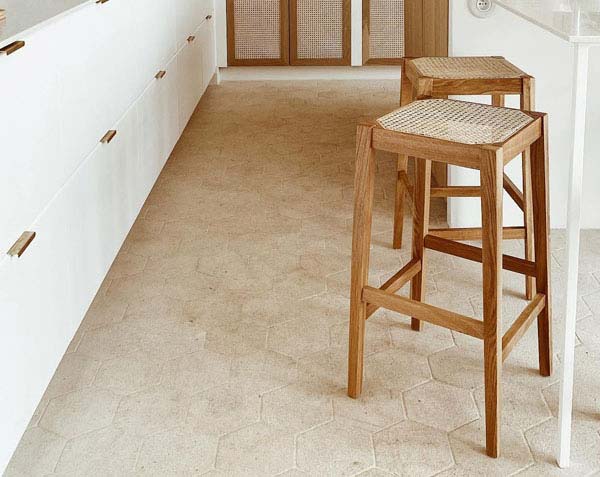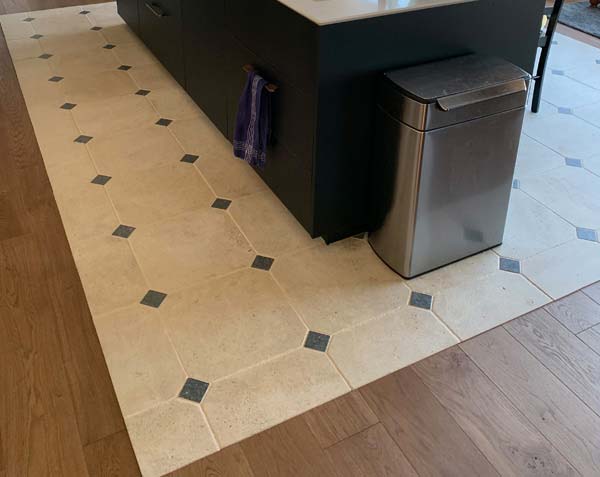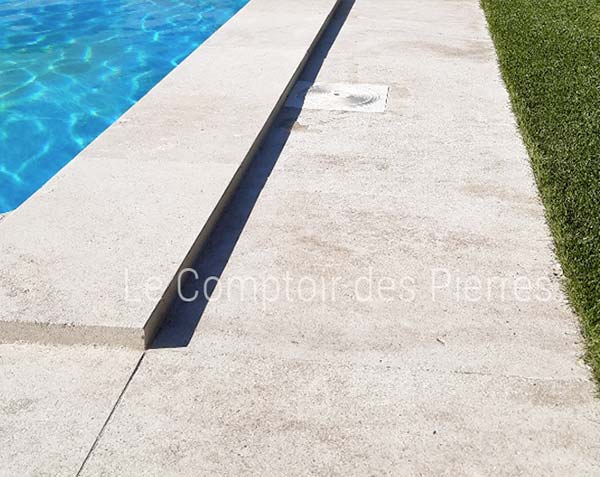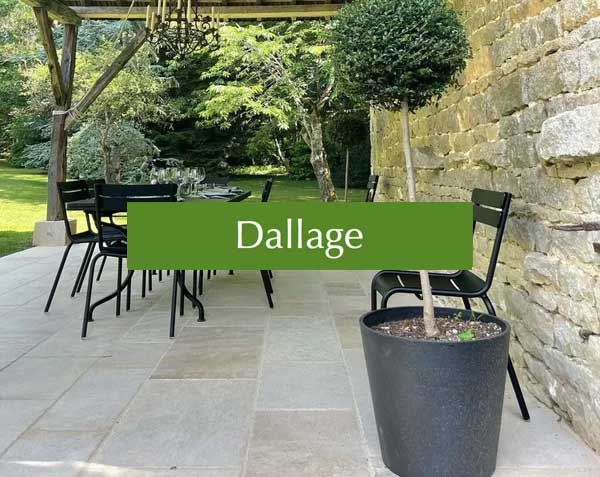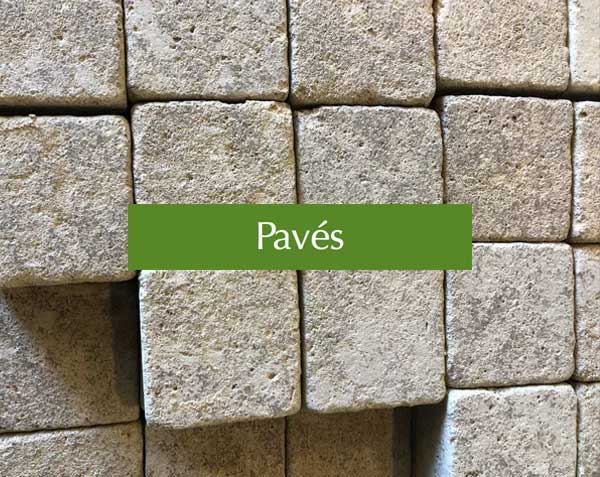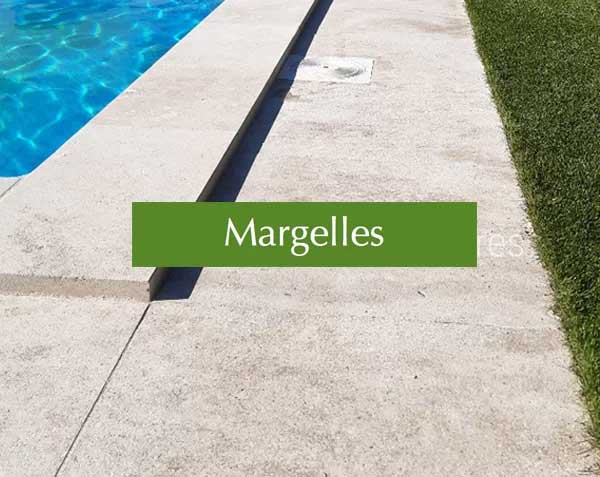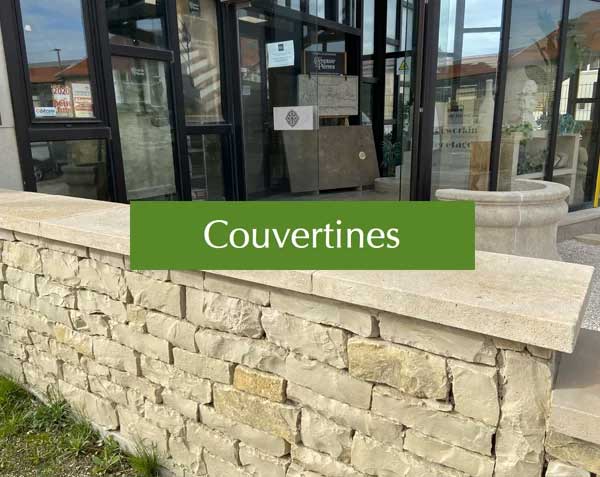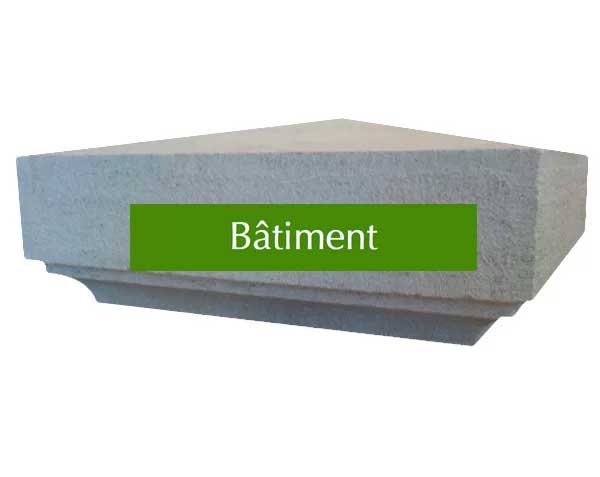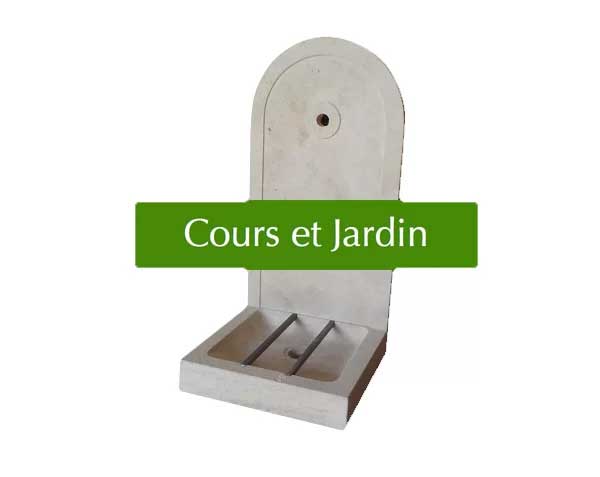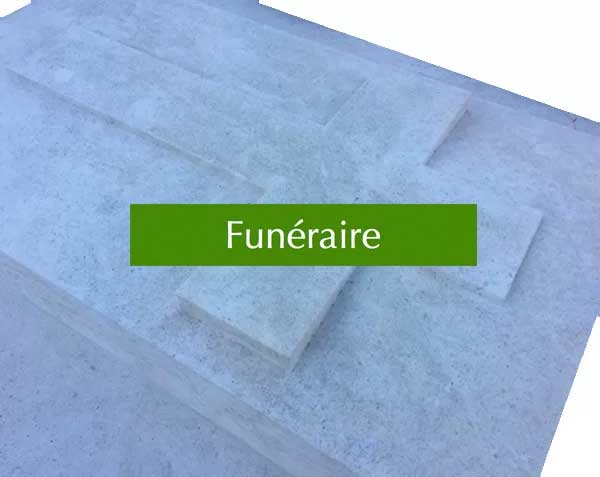Semond limestone is one of the stones we work with the most in our workshop.
The Top 2 after Lanvignes limestone.
We believe this can be explained by two main reasons:
- Color: the shades of beige cream to light, passing through golden beige, of this stone are emblematic of the light colors of Burgundy stones. Our clients often expect this type of nuances when looking for a natural stone from Burgundy. It's a luminous stone.
- Resistance: This stone is one of the most frost-resistant (240 freeze/thaw cycles - we speak of severe frost resistance) and is also suitable for water features (kitchen and bath), paving, or wall copings. However, at Le Comptoir des Pierres, we prefer to avoid making sinks, basins, or shower trays in Semond limestone (although it is still quite possible). We primarily use a harder stone with a similar color: Charmot stone. With this exception, the field of possibilities is almost infinite.
THE COLORS OF THE LIMESTONE
SEMOND BLENDED
The "Semond Blended" limestone is one of the main references in Burgundy limestone with its cream beige color. It also features a more or less significant concentration of grayish areas, which correspond to sediments, shell debris, or plankton. The Blended Semond limestone is a blend of different benches (extraction level or "pocket" with different nuances) from the Semond quarry. It is enhanced in an aged finish.
This limestone has been used for the renovation of the Saint-Sulpice church in Paris and in many private estates in France and Europe.
We also work with this stone alongside Lanvignes stone in floorings and pavements to create our Saint-Genay model, which highlights all the nuances of the stones from the Châtillon-sur-Seine region (from cream beige to golden-yellow). Semond limestone brings clarity, brightness with its background of cream beige grain.
SEMOND LIGHT WITH VEINS
In the quarry, there is a "stratum" (which means a level or a vein depending on geological characteristics) of stone that is lighter, which we call Semond Light with veins. We can specifically select this bench (similar to Lanvignes Light-Golden compared to Lanvignes Golden-Yellow). It is one of our main stones, and we are fully capable of offering it to our clients. The stone is lighter, less yellowish, and also more veined. It is thanks to this stone that we produce cobblestone pavings in aged finish.
For installation in areas with severe frost (high mountains), we recommend prioritizing Semond Blended over Semond Light with veins, which is more resistant based on our experience. Semond Light with veins limestone is visible in our showrooms or can be ordered as a sample on our website.
Note for all our photos : the angle of the shot or the brightness can give a quite varied rendering in terms of color. Feel free to visit our showrooms or order samples.
USES FOR THIS LIMESTONE
USES FOR THIS LIMESTONE
90% of our range can be made in Blended Semond or Semond Light with veins : coping stones, buildings, courtyards and gardens, paving, cobblestones, funerary stones... There are no limitations on usage as it is suitable for outdoor (terrace, driveway, coping stones) or indoor flooring (but not for sinks, basins, shower trays, or countertops as mentioned above). However, for paving stones in roads, we would recommend Comblanchien rather than stones from the Châtillonnais.
Regardless of your region (excluding high mountains), this stone is suitable for outdoor use. Lanvignes stone would be suitable for a chalet in the Alps, for instance, rather than Semond limestone. There are no concerns if you are in Belgium, the Netherlands, England, etc.
Whatever your region (except high mountain), this stone will suit outdoors. For high mountains, Lanvignes limestone will be adapted and not the Semond stone for example. No worries also if you are in Belgium, the Netherlands, England…
TECHNICAL SPECIFICATIONS
Originating from the Châtillonnais basin, Semond stone is considered semi-hard (density 2200 kg/m³) and bears the same name as the town from which it is extracted, located 20 kilometers from Châtillon-sur-Seine.
It is a limestone with a medium grain. There are some presence of shells. Gray sedimentary patches for Semond Nuancé. More or less pronounced orangish veins for Semond Clair Veiné. It is an oolithic limestone from the Jurassic period, Bathonian stage. Its age is 160 million years. As a reminder, Burgundy natural stones were formed by sedimentation; it is the bottom of the ocean 160 million years ago.
